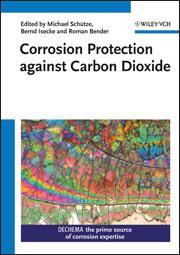Corrosion protection against carbon dioxide
Corrosion protection against carbon dioxide
Michael Sch?tze, Bernd Isecke and Roman Bender (eds)
Weinheim, Germany: Wiley-VCH
2011 | 230pp | ?105 (HB)
ISBN 9783527331451
Reviewed by Shiladitya Paul

Since the second industrial revolution in the 19th century, the materials corrosion and degradation problems of working with CO2 environments have been of increasing concern in many industrial sectors, including oil and gas exploration, chemicals production and food processing.
Nevertheless, the publication of this handbook could not have been more timely, as in the past few decades resolving materials problems associated with handling and storing CO2 has become a global requirement. The renewed interest stems from the imminent objective of reducing CO2 emissions to mitigate climate change, noting that the success of the most promising sequestration strategies demands a thorough understanding of materials’ behaviour in CO2 environments.
Covering a topic that is encyclopaedic in scope is no easy task but the editors have undoubtedly succeeded. The handbook’s strength lies in compiling a plethora of practical data on a wide selection of materials (polymers, metals, ceramics and composites) in industrially relevant conditions over a very wide spectrum of pressure, temperature, flow rate, presence of aqueous phase, etc. Much information is presented in the form of high quality plots and tables with detailed annotations where necessary and the main text is supported by numerous references listed at the end of the handbook. Although the pedagogical aim of the book is not delivering a fundamental understanding on the principles and mechanisms of CO2 corrosion, the reader would undoubtedly benefit from the addition of micrographs and illustrations in future editions.
In summary, this is a state of the art practical compilation, likely to be indispensable for professional engineers and scientists who are seeking a rapid and easy guide to select materials, and predict their behaviour when exposed to CO2 environments.
RSC members can purchase this book direct from the publishers for a 30% discount on the RRP. See the member benefits link on this page.












No comments yet